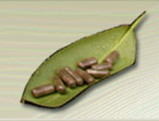 Loading... Please wait...
Loading... Please wait...Providing 25 Years Of Premium Service
Storewide Sale - Save 20%
- Home
- Ayurvedic View on Depression and Bipolar Disorder
Ayurvedic View on Depression and Bipolar Disorder
Bipolar disorder, also known as manic-depression is a Western psychological diagnosis, characterized by mood swings between elation (or mania) and depression. There are an extensive amount of symptoms and manifestations relating to these diagnoses that can vary greatly, depending on the environment and varied imbalances of the individual. Symptoms of bipolar disorder are different from the normal ups and downs that everyone goes through from time to time in modern life. It can cause unusual shifts in mood, energy, activity levels, and the ability to carry out day-to-day tasks.
Depression also affects one’s mood and ability to cope by causing a sense of hopelessness, despondency, cheerlessness, worry, anxiety and sorrow. In susceptible individuals, bipolar disorder and depression are primarily amplified by low ojas (vigor, immunity, strength, contentment, essentially the fluid of life) and high vata (biological principle of movement and dryness) in the mind and nervous system. As we shall discover, Ayurveda offers a multitude of holistic tools and ways of approaching this disease that can restore health so one does not have to rely as heavily on conventional western treatments and medications that can carry with them so many negative side effects.
Traditional Ayurveda has no specific equivalent description for the diagnosis of bipolar disorder written in the classical Ayurvedic texts. One of the main ancient treatises on Ayurveda is the Charaka Samhita, describe such mental disorders as “wandering about of mind, intellect, consciousness, knowledge, memory, inclination, manners, activities and conduct.” Some of the descriptions and symptoms written in the Ayurvedic texts are similar to western diagnostics, and some parallels can be drawn. Brain, or mood disorders manifest due to imbalances in the three fundamental biological qualities, or doshas that govern the body and mind; vata, pitta and kapha; and the mental principles of sattva, rajas and tamas, which, to simplify, are the “qualities of consciousness.”
Regardless of the doshic imbalance, all patients suffering from bipolar disorder are likely to have low ojas (contentment, ability to cope, vitality and immunity). This low ojas is the instability that is allowing the vata movement from one mood state to another. The patient will also be more susceptible to vata changes in mood when they are under stress. It is this stress that wears down the “container of ojas.” As was mentioned previously, bipolar disorder usually doesn’t manifest until one’s twenties or thirties. It is possible that as the patient moves out of the kapha phase of life into the busier more stressful pitta time of life, they lose the grounding of the water and earth elements and become more susceptible to the heat of pitta, which in turn contributes to the drying of vata. Changes in the underlying emotions are brought on by vata-provoking qualities in the individual’s lifestyle, habits, foods and activities. These qualities are dry, rough, light, cold, subtle and mobile. Some specific etiologies include: Eating while anxious or depressed, eating on the run, taking in stimulants such as coffee or cigarettes, using intoxicants such as alcohol or recreational drugs, following irregular routines, traveling frequently, going to bed late, loud music or noise, engaging in excessive physical or sexual activity, failing to change with the seasons (especially autumn), overloading on stimulation such as TV, mass media, suppressing inner creativity and emotional sensitivity. Bipolar disorder affects as many as 5.7 million American adults, which is about 2.6 percent of the population over the age of eighteen. The disease is also quickly on the rise especially in children; one study showed as high as a 40-fold increase between 1995 and 2002. One of the reasons for this could be the increasingly vatagenic environment to which today’s children are exposed. “The fact that we have more of these problems is because our culture is over stimulating people.” “Wherever there is excess stimulation, the natural consequence is long term depression once the stimuli gets removed.”
The pathology path of vata’s movement through the body begins when vata accumulates and becomes aggravated in the purishavaha srota (colon). From there it overflows into the rasa dhatu (plasma tissue), and rakta dhatu (blood tissue). If the bodies’ tissues and pathways have preexisting weaknesses due to genetics or in the case of the brain and mind, emotional trauma, then under the right conditions repeated doshic disturbances will relocate to those sites. In the case of bipolar disorder, vata moves from the plasma and blood and relocates to the mano vaha srota (pathway of the mind) resulting in loss of awareness of one’s situation and fluctuations in emotional states. It also secondarily relocates into the majja dhatu (nervous tissue) and majja vaha srota (pathway of the nervous system), resulting in biochemical changes to the neurotransmitters being released effecting our thoughts. Once vata has taken root in these tissues and pathways, it starts to manifest the myriad of signs and symptoms of bipolar disorder.
In Ayurvedic medicine the label of bipolar is not really relevant to treatment. Diagnosis is based on the patient’s prakruti (underlying constitution) and the past and present history of vikruti (short-term symptoms and doshic imbalances). The practitioner must consider the long- and short-term state of doshas and subdoshas; the patient’s levels of ojas, tejas and prana; as well as the state of mental principles, sattva, rajas and tamas. Ayurvedic practitioners must also identify the major stressors that are pushing the patient’s mental states to opposite poles.
There is no known cure for bipolar disorder. The two main Western methods for treatment are medications and psychotherapy. When used in conjunction, they have shown to be effective at preventing relapses and reducing the severity of the patient’s symptoms. As Dr David Frawley states: “Modern Medicine attempts to change the consciousness through altering the chemistry of the brain.”
The main medications used are mood stabilizers such as lithium, valproic acid (Depakote) and lamotrigine (Lamictal); antipsychotics such as olanzapine (Zyprexa), quetiapine (Seroquel) and aripiprazole (Abilify); and lastly, antidepressants such as fluoxetine (Prozac), paroxetine (Paxil) and bupropion (Wellbutrin). These medications are an amazing product of modern science. They have a strong effect on brain chemistry and are often very useful for managing this disease and improving the lives of individuals. Any medical doctor can prescribe these medications, but typically a psychiatrist, rather than a family practice or other specialty physician, would manage bipolar disorder. The downsides to these medications include countless known side effects and imperfect research as to how they affect the body and mind in other ways especially long term. From an Ayurvedic perspective, these medications do not treat the deep doshic root causes of the disease, but rather they balance and suppress the manifesting symptoms. “One of the main problems with modern medicine is that acute care has become the primary care both for the physical and the psychological medicine, which often causes more trouble with the chronic diseases.” It is also very possible that these medicines simply move the doshas into other parts of the body, only to negatively affect the health of the individual in other ways. For example, vata being pushed into the medas or asthi dhatu could cause wasting, osteoporosis, or arthritis; vata staying in the majja dhatu could lead to other types of brain problems, such as Parkinson’s or Alzheimer’s; vata entering the shukra dhatu could cause sterility or low libido.
The other main Western treatment is psychotherapy or “talk” therapy. Some common psychotherapy treatments that have been used to treat bipolar disorder are:
“Cognitive behavioral therapy, helps people with bipolar disorder learn to change harmful or negative thought patterns and behaviors. Family-focused therapy includes family members. It helps enhance family coping strategies, such as recognizing new episodes early and helping their loved one. Interpersonal and social rhythm therapy helps people with bipolar disorder improve their relationships with others and manage their daily routines. Regular daily routines and sleep schedules may help protect against manic episodes. Psychoeducation teaches people with bipolar disorder about the illness and its treatment. This treatment helps people recognize signs of relapse so they can seek treatment early, before a full-blown episode occurs.”
Ayurvedic Treatment (Chikitsa)
In management of any psychological disease, Ayurveda works to change the energetics of the mind. The two main Ayurvedic treatments for managing bipolar disorder center on increasing our ojas and reducing our stressors. The stronger our ability to cope and withstand the stressors of the world, the less likely our moods will fluctuate between highs and lows. When ojas is strong we are less likely to be buffeted by the doshas. The more we identify our stressors and reduce them, the less ojas will be worn down. The patient’s therapist and family are good allies in helping the patient identify these stressors. The main tools used in managing the mind are “diet and herbs on a physical level, prana and the senses working at a more subtle level, and mantra and meditation working more at the level of the mind itself.”
In dealing with the doshas, vata must be balanced first even if there are other current imbalances. The practitioner does not want simply to treat the current vikruti, only to drive the movement from one mood to another. It is no coincidence that many of the treatments for vata will also build ojas. The main thing that helps both is to develop regular solid routines and stability. This includes: waking and sleeping times, eating times and food choices, work schedules and one’s general activities throughout the day. Irregular patterns place stress on our body’s ability to function at its best. Some examples of this are regular mealtimes and bedtimes. When our body’s biological clock can anticipate meal or sleep times, it will release chemicals such as amylase, pepsin and acid needed to digest food in the former and chemicals such as melatonin needed to sleep in the latter. When the body is subject to irregularity, we will be prone to problems like indigestion and insomnia that put great stress on our bodies and reduce ojas. This is especially true of digestion, since we identified samana vayu as being the main causative factor in changes from one mood to another and the digestive tract as being the primary site of all doshic disturbances in the body. Sleeping times are also important. Going to bed around 10:00pm and awakening near sunrise will help the body change mental states in the kapha times of day when it is more stable. The morning should be devoted to steady and healthy morning routines, including meditation and exercise. Since vata has the qualities of: “cold, light, mobile, dry and piercing, and follows a transverse course,” it is necessary to implement the opposite qualities in any treatment. Regardless of the type of treatment, an emphasis on warm, heavy, stable, moist, oily and dull qualities should be made.
The best place to start in dealing with bipolar disorder is to identify and minimize stressors that trigger changes in the mood states. Family and friends may be useful in helping to identify what these are as patients may have some denial about this. Our society is largely work driven and it may be necessary for patients to reduce their workload in order to reduce stress and focus on their health. Prioritization of all the things one wants to do in order to create a more laid back and relaxed schedule can often be difficult. The patient’s surroundings at home can also be a major source of stress. Keeping the home tidy, free of clutter and clean helps to cultivate a more sattvic and stress free environment. Time in nature is also an excellent method for reducing stress, building ojas and pacifying vata.
The most important factor concerning meals is eating at regular times each day and also making sure not to go without eating. Food pacifies vata and diet should emphasize whole grains, cooked vegetables, mung beans, meats, fresh dairy, nuts and oils in order to ground the patient and build up ojas. Generally, sweet, sour and salty tastes should be emphasized, as well as the qualities of warm, moist and heavy foods. When one is having a pitta manic phase, then cooler and blander foods may be useful, and during depressive states, spicier foods can be used. Canned, frozen, old, processed, microwaved and rancid foods should be avoided. It is also important to stabilize blood sugar. Increasing the ratio of fats and proteins in relation to carbohydrates and keeping simple carbohydrates to a minimum will help with this. Coffee and other stimulants should be avoided since they will only serve to keep someone going artificially without getting true rest and will lead to more vata imbalance. Lunchtime should be the main meal of the day. It should last at least one hour and be taken at the same time, everyday while seated in a peaceful, distraction free environment in order to let food settle and digest before moving on to other activities. Some form of grace and blessing should be given before eating in order to help center ones mind.
When treating bipolar disorder with herbal therapies, nervine tonics become the most important for building stability and mental ojas. Nervine sedatives may be useful for elated or manic episodes and nervine stimulants may be useful for depressive states; however, the intent is not to force the brain out of a particular episode by providing herbal uppers or downers. While having sedatives and stimulants on hand is okay, the goal should be to balance the doshas and normalize the production of neurotransmitters using tonics. A specific formula should depend on the particular constitution and state of the patient. Some generally good herb choices for tonics are ashwagandha, brahmi, shatavari, ginseng, shanka pushpi, nutmeg, skull cap, kappikacchu, haritaki and bhringaraj. Also, jyotishmati, ginkgo, jatamamsi, oat straw, valerian root, St. John’s wort and Gotu Kola may be useful in some patients. Brahmi is a great choice for any mood state since it can both act as a mild stimulant and sedative depending on what mood state needs to be balanced. Ashwagandha is very useful for building ojas and pacifying vata in the nervous system and mind. All of these herbs should be taken with herbs that aid in their digestion and absorption. Triphala is a useful combination of three fruits that not only strongly reduces vata in the intestines, but also helps with the absorption of the other herbs and foods that are being taken and will exponentially multiply their effects. Since bipolar disorder is partially rooted in the nervous system, medicated ghees are an ideal medium for enabling these herbs to penetrate deeply into these tissues.
The five sense therapies (vision, sound, taste, touch and smell) can be used to place the patient in balancing and restorative surroundings. Color therapy may be useful for the visual sense. Yellow, green, gold, blue, white, violet, and pastels in general are considered sattvic colors; gold and brown are considered to raise ojas; and yellow, green, gold, brown and purple are considered to decrease vata. Colors can be applied to clothing, home décor, meditation and flowers. Music that the patient finds enjoyable or mantra therapy may be beneficial sound therapy. Since vata is rough, dry cold and sharp, touch therapy should have the opposite qualities. Clothing worn and bedding should be soft and warm. Regular, gentle and steady massage with lots of oil is also an excellent therapy for the touch sense. While professional massage is also excellent, daily self-massage with sesame oil is more affordable, easier to implement and offers the added benefit of self-love needed for more insecure vata type individuals. Aromas that may be useful to calm the mind during elation include sandalwood, chamomile, clary sage and jatamamsi. For depression, rosemary, cinnamon, thyme, mint and eucalyptus may be useful to help get moving. Rose, basil and lavender may add balance to bipolar disorder. They can be taken in the form of essential oils with an infuser, or by adding a few drops to a warm bath.
Exercise can also be an important factor in managing the doshas, as well as helping one relax and sleep well. It is; however, important not to over exert oneself since that can deplete ojas. Generally, working out to half of one’s capacity is advised. Calming exercises like Yoga, Qi Gong, Pilates and Tai Chi are generally wise choices for all three doshas. Aikido, gardening, walking and gentle hiking are also good activities. When the patient is experiencing more pitta manic symptoms, then slow and cooling exercises are best like a cool walk in nature or slow swimming. When the patient is in a more depressive state, mild running, team sports or Bikram Yoga may be of use.
Panchakarma (“the five actions”) is the main Ayurvedic method for purification. “Owing to the subtle nature of its processes, it penetrates deep into the nervous system. It is useful for psychological problems caused by excess of the three doshas. Yet it can also be helpful for psychological problems caused by internal factors, emotions and karma.” The practitioner must of course evaluate the state of the patient’s ama (toxins) and strength of ojas, before deciding on a plan for how aggressively to pursue panchakarma. Since the patient is likely to be low ojas, a slower palliative plan that focuses on strengthening the patient during purification is more likely to be useful. Since the primary problem is vata imbalance, a program with an emphasis on bastis (therapeutic enemas) should be adopted. If the patient is in a manic phase, virechana (therapeutic purgation) may be used and if the patient is in a depressed state, vamana (therapeutic emesis) may be an option. Oleation with medicated oils through abhyangai (Ayurvedic massage) is also a key therapy in palliation, as well as for managing vata whether or not it is a part of panchakarma. Shirodhara (flowing oil on the forehead) and shirobasti (oil in a crown on the head) are also highly recommended for their direct action on the brain, mind and subtle energy fields.
In Ayurveda sleep is considered one of the great pillars of health. Sleep builds ojas and pacifies vata. Its importance for treatment of bipolar disorder cannot be understated. “There is also a connection between mental health and deep sleep.” “It is the state of deep sleep that allows the mind to renew itself.” Sleep allows the body and mind to naturally rest and heal. Many of the other therapies, foods and herbs listed here help to regulate the body so that it can get enough quality sleep. Most sleeping pills are a class of drugs called “hypnotics” that put the body into trance-like states that do not go through the normal sleep stages. They do not provide the same quality of sleep as a natural, healthy sleep cycle.
Meditation, breath, pranayama, as well as other yogic practices, are also of great importance in managing bipolar disorder. They have the ability to cultivate a sattvic mind, as well as to teach the patient how to manage the internal channels and energy moving through their body and mind. Meditation brings us back to a state of awareness that allows us to see the transient nature of things including our own moods and emotional states. Repetition of these practices actually has the ability to change our internal biochemistry, lessening the large fluctuations in our minds. While diet, herbs and lifestyle practices can do much on an outer level to pacify doshas and prevent disease, practices like meditation work on a much deeper and more fundamental level to change the subtle energies in our consciousness.
Since Ayurveda is not a quick process and relies on the development of healthy routines and habits over a lifetime, it is important for a patient already diagnosed as bipolar to continue with the treatments laid out by his or her physician. If the patient has not received a formal diagnosis and the Ayurvedic practitioner, patient, or a patient’s family has concerns about a severe mood disorder, the patient should be referred to a primary care physician for evaluation. Even if a patient currently seems stable, if there is a history of severe mood states and he or she falls back into them, then the patient will likely be unable to follow an Ayurvedic lifestyle. Western pharmacology can often provide the acute stability needed for the individual to work on developing long-term habits and routines. A year on an Ayurvedic treatment plan would be a reasonable minimal timeframe for a patient to follow before talking with his or her physician about coming off medications.
Conclusion
Bipolar disorder is a multi-faceted disease consisting of periods of elation and depression. It is a condition of low ojas and high vata in the mind and nervous system. A regimen of Ayurvedic treatments to tonify, develop regularity and reduce stressors can help to build ojas and pacify the vayus. Ayurveda is useful for managing bipolar disorder because it is a holistic approach that looks at the constitution, the state of current imbalances, and the whole environment of an individual before deciding what is the best regimen to bring him or her into a balanced state. It provides a complete package of useful everyday tools such as lifestyle, diet, herbs, purification and meditation that best suits the specific individual. This is contrasted with Western medicine, which has the tendency to put everyone with similar symptoms into the same box and provide them with pharmacological solutions that suppress symptoms but don’t solve the underlying problem. Ayurveda not only has the ability to treat symptoms of a psychological disease like bipolar disorder, but it can also move past the disease to identify its root causes and the underlying patterns affecting the individual. Combined with meditation and other yogic practices, Ayurveda works on the subtle aspects of mind to heal consciousness and release individuals from disease.















